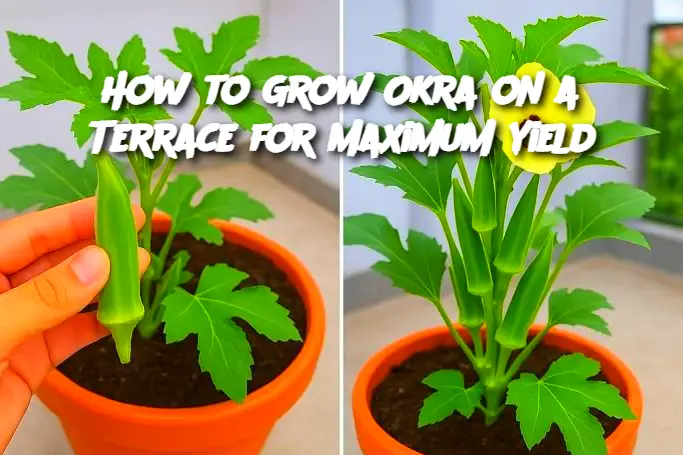ADVERTISEMENT
Introduction
Growing okra on a terrace is a rewarding way to cultivate this nutritious and versatile vegetable even if you don’t have a garden space. Okra thrives in warm climates and is relatively easy to grow in containers, making terrace gardening an ideal method. With the right care, you can enjoy fresh, tender pods throughout the growing season while maximizing your terrace space.
Ingredients (Materials Needed)
-
Okra seeds (choose a variety suited for container growing, e.g., dwarf or bush types)
-
Large containers or pots (minimum 12 inches deep, with drainage holes)
-
Quality potting soil rich in organic matter
-
Compost or well-rotted manure
-
Fertilizer (balanced NPK or organic alternatives like fish emulsion)
-
Watering can or hose with gentle spray
-
Stakes or supports (optional, depending on okra variety)
-
Mulch (straw, dry leaves, or coconut coir)
Preparation
-
Seed Selection and Soaking:
Select fresh, high-quality okra seeds. Soak seeds overnight in warm water to soften the hard seed coat and speed up germination. -
Choosing Containers:
Use pots with good drainage and at least 12 inches deep to accommodate root growth. Terra cotta, plastic, or fabric pots all work well. -
Soil Preparation:
Fill containers with a mix of potting soil and compost or manure (about 3:1 ratio). This will provide nutrients and retain moisture. -
Planting Seeds:
Sow 2-3 seeds per container at a depth of 1 inch. Once seedlings emerge, thin to the strongest one per pot. -
Positioning:
Place the containers in a sunny spot on your terrace. Okra needs at least 6-8 hours of direct sunlight daily. -
Watering:
Water consistently to keep soil moist but not waterlogged. Okra prefers slightly dry conditions once established, so avoid overwatering. -
Fertilizing:
Feed plants every 3-4 weeks with balanced fertilizer or organic alternatives to encourage healthy growth and pod production. -
Supporting Plants:
If growing tall varieties, use stakes to support the plants and prevent wind damage. -
Mulching:
Apply mulch on the soil surface to conserve moisture and reduce weeds.
Suggestions for Presentation and Conservation
-
Harvest okra pods when they are young and tender, about 2-4 inches long. Overripe pods become tough and fibrous.
-
Use freshly picked okra in stir-fries, soups, or grilled dishes for best flavor and texture.
-
To conserve, okra can be blanched and frozen or dried for long-term storage.
-
Store fresh okra in a paper bag or perforated plastic bag in the refrigerator and use within 2-3 days for optimal freshness.
Variation
ADVERTISEMENT
ADVERTISEMENT
